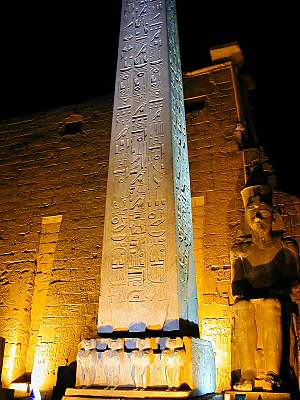
In Rainer Maria Rilke’s splendorous “Book of Hours,” there is a little stanza that may indeed refer to an obelisk:
“I circle around God, around the primordial tower.
I’ve been circling for thousands of years
And I still don’t know: am I falcon,
a storm, or a great song?”
Even if it doesn’t refer to an obelisk exactly, it still alludes to an obelisk-esque structure being like God in stature. It is also beautiful. Rilke is amazing.
Moving along.
The following two events—one which is fictitious and another one which is not so fictitious—also deal with obelisk-like structures:
In the “Lord of the Rings” trilogy, Frodo Baggins and Samwise the Brave must journey far and wide, through perilous cave systems and almost-impassable swamps, to reach the daunting and nefarious land of Mordor. In this benighted and tenebrous land of ugly orcs and raging tempests, Frodo and Samwise the Brave must destroy the precious, yet ill-fated ring. They must attend to this task in order to destroy Sauron, a malevolent, all-seeing eye who lives on top of the blackest tower imaginable. When they succeed in tossing the ring in a flowing river of magma—along with the poor little, emaciated Golem—Sauron collapses like a jenga game does when intoxicated people are playing it while burning the midnight oil.
On September 11th, 2001, two airplanes flew into two stately towers in New York City. Pandemonium ensued. Smoke and fire gushed out of the towers’ open wounds. What mayhem. A cavalcade of people jumped from incredible heights to fall to their doom. And then, the great collapse: the two towers crumbled and turned into rubble, metallic shrapnel, dust. Thousands died. Everyone was shocked. The world has been a different place ever since. As a result of this incident—an incident that may have been staged by the US government—there is now a war being waged in Iraq and Afghanistan. People die each day by either roadside bomb attacks, gunfire, or by simply being in the wrong place at the wrong time.
At this time, I don’t want to write a film review for “Lord of the Rings,” nor do I care to talk about the wars being waged against the Iraqi and Afghani people (as tragic as it truly is). I simply brought up these two events as examples. The topic at hand here, after all, involves the existence of the obelisk, the tall, four-sided structure that rises up from the earth like water from a geyser. More importantly, I wanted to briefly talk about how the fall of the “obelisk-like structure” in these two examples relates to an epochal shift we are experiencing right now in our world.
I believe the fall of Sauron and the twin towers represents the fall of a phallocentric system. This phallocentric system, or paternalistic system, or male-oriented system—whatever you want to call it—has been dominating our minds for centuries now. The system itself is embedded in language, logic, governmental policies, scientific theories, and pretty much an entire way of life. Because it is straight up and down, it doesn’t really take the horizon into consideration. Because it is relatively narrow, it doesn’t take other possibilities into consideration. Undoubtedly in my mind, the death of Sauron via the jettisoning of the ring and the death of the two towers symbolizes a collective move from male-dominated values and structures to holistic values and structures. If we look for enough evidence of this shift we will indeed find it everywhere.
In saying these things, I don’t want to promulgate the notion that the phallocentric system is inherently evil. I don’t believe this to be so. It is simply limited by the boundaries it has imposed upon itself. In antiquity and in sacred Vedantic texts, the phallus, or the obelisk-like structure, was honored by spiritual aspirants. It was seen as a very holy, masculine symbol. In Alain Danielou’s book, “The Phallus: Sacred Symbol of Male Creative Power,” there is passage where Danielou talks about the “standing stone” (or lingam) in Vedantic mythology. The passage relates to the Brahma, Vishnu, Shiva triad:
“Shiva’s emblem, the phallus, is represented standing vertically in shrines, divided into three sections. The lowest section is squared and concealed within the pedestal. It represents Brahma, the maker, the gravitational power that shapes worlds. The octagonal central section represents Vishnu, the centripetal force of concentration that gives birth to matter. The upper section is cylindrical and represents Shiva, the centrifugal force of expansion that issues forth matter and form from its outpourings. The base of the lingam is gripped by the yoni, the receptacle.”
So, when taking these words into consideration, the obelisk becomes a very powerful symbol of virility, energy conservation, and creation. These are obviously very positive forces. But I still don’t think it is complete without the horizon that surrounds it, the yoni, the land, the receptacle. The “Lord of the Rings” saga becomes flippant and feeble without the presence of the ring, the circular shape that represents the feminine. Rilke’s stanza becomes pointless and aimless without the act of circling being involved. We need the surround just as much as we need the central pillar of creation. These are almost indisputable facts of life.
Good day.

No comments:
Post a Comment